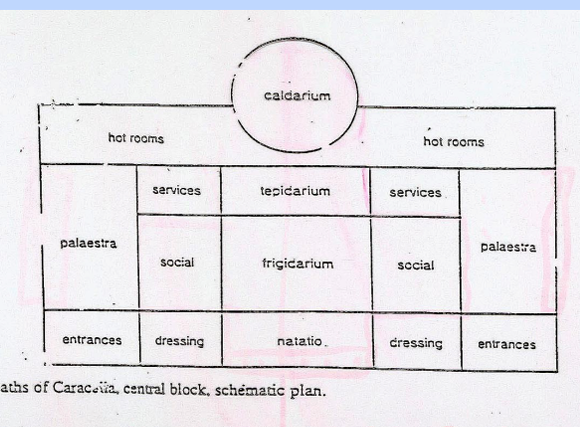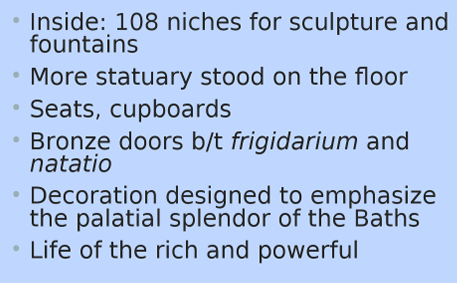final final classicsc
1/643
There's no tags or description
Looks like no tags are added yet.
Name | Mastery | Learn | Test | Matching | Spaced |
|---|
No study sessions yet.
644 Terms
why was roman clothing important
romans attached great important to distinctions in dress
important to visualizing the social hierarchy
The tunic (men)
worn by all ages and ranks
simple short-sleeved underdress
tunics with long sleeves were considered
effeminate/barbaric
the toga is a
public display garmet as the tunic was much more comfortable
Fabric of the tunic depended on
ones financial means
wealthy men wore
soft wool or expensive linen
poor men and slaves wore
whatever fabric was available
cloth was
very expensive as all clothing was woven to shape/made to measure
no bolts or lengths of fabric
available for purchase
secondhand clothing dealers existed
the toga
draping, cumbersome garment made of wool worn only by citizen males
worn over the tunic
toga could use up to
10 yards of material
senator wore
lati clavi
toga praetexta
calcei
lati clavi
two wide purple stripes on the shoulder of the tunic
toga praetexta
purple border on the upper edge of the toga
calcei
black or red shoeboots
equites wore
narrow stripes on the tunic
toga
gold ring
free men wore
toga (short or scanty if poor)
why might freeman wear toga
symbol of roman citizenship
symbol of peace, civilian life and the toil of the city
togas were expensive so poor men may not have toga
without toga
men would’ve been worried for being mistaken as an enslaves or not a citizen
roman men canvassing for office wore
toga witened with chalk
candidatus (candidate)Tun
Free citizen boys
tuni
toga praetexta
bulla
bulla
bubble shaped pendant as an apotropaic ddevice to indivate he is a citizen
the enslaved wore
a tunic
maybe shabby clothing appropiate to their station
could be fancilt dressed and showily ornamented
clothing indicated
status as well as rank
_____ was a very expensive and status laden colour
purple
the roman matron
long tunic
palla
stola
fillets or fibbons in hair
palla
cloak or mantle
stola
slip like garment worn as an overdress suspended from straps
woman have no
sing of rank (borders/stripes), their clothing showed if they were respectable, chatste
Color and fabric made a woman’s
status known
women could _________
dress colourfully but men could not
dye colours
sky blue, yellow orange, brown, purple, golden, dark green, amethyst, pink
luzury fabrics
silk and lininn
silk
is a feminine fabric and men could get made fun of for wearing it
“stiff with gold”
could be woven with gold wire, clothing, so it would make it stiff
Coan silk
transparent fabric
Pale complexion is
sign of status
meaning you don’t have to leace the house to work so you can stay pale
done with white lead or chalk dust
problem with white lead or chalk dust
not very long lasting, and ran in the rain and hot weather
makeup for eyes and brows
kohl
made of soot, lamp black, ashes
colour for eyes and brows
green and black are known
lip colour in rome
none
cosemetic posions
White lead is very dangerous
skin would loose its youthful tone
terrific ravages of the cosementic posisions meant skin because yucky, so we had to apply more makeup wihcih in turn made the skin worse
complex hairstyles
indicated social and financial standing
was a sign of social rank and power
Hair tools
padding, animal fat, wire frame, hair stitching, wigs, hairpieces, curling tongs
hair dyes popular
lower class women and hair
had simpler hairstyles
Bathing in ancient rome is an
integral part of daily life
multifunctional
bathing in greece
bathing is brief and invigorating
baths in ancient rome
for leisure and relaxation
wealthy bath
private baths in their townhouse or villa
men bathed
in the afternoon
women bathed in
the morning when the baths had not headted up
4th c CE bathing
thermae in rome
Thermae
large bathing establishments with differently heated rooms
Frigidarium
cold room w/ a plunge bath
Tepidarium
warm room
Caldarium
hot room
thermae were done in a
symmetrical plan all over the empire
Natatio
swimming pool
other rooms in the thermae
sweating rooms, message rooms
vestibules and meeting rooms
apodyterium
change room
Palaestrae
exercise grounds
what happened in the baths
bathing
food and drink
gossip, network, politics
seen and be seen, make friends and stuff
being clean, leisurely and healthy was a
mark of being roman
roman moralists and bathing
thought it was effeminizing, sexual indiscretions occur that weaken the spirit
pick ups and voyeurism
earliest baths
models on green baths
hip baths like a small baby pool where water gets poured over you
Balneae
small indoor baths built by wealthy romans who charged a fee for entrance
dark, dingy and loacted in dark alleyways
important for basic hygiene and pleasure
thermae decor
decoration gradually became fancier in all bathhouses
Pompeii baths
stabian baths — 100 BCE (small and dark)
bathing was not mixed here
clothes and public bathing
everyone walked around naked all the time
they had little cubbies, you could bring a slave or pay someone to watch over the clothes
suburbian baths and apodyterium 7
- had numbered boxes for the places to put the clothes
have sex acts painted in the public locker room
Baths of Caracalla
grandiose (thermae)
built 212-216 CE
aqueduct specially built
bathing block is surrounding by gardens
colonnaded walkways on 3 sides
Grounds 297m across
main bath building at Caracalla size
119 × 226
could accommodate several thousand bathers at once

The athlete mosaics in the baths
spur on the bathhouse attendees for motivation in being fit and great and stuff
hypocaust system
heating system in the baths
floor raised on colums of brick tiles
pumping air from furnaces into hollow floors
heated by radiation
furnace bured wood or charcoal
tubuli
hollow pipes in the walls
100BCE
Baths of caracalla decoration
little remains today
floors: mosaic
black and white, marine themes, colored marble
main rooms had marble floors
main rooms had
purple columns
frigidarium decor
pools lined in white marble
marble on walls
glass mosaic on floors
caldarium decor
windows and a guilded ceiling
north facade decor
red columns and niches for statues
marbles w glitter in the sunlight
inside decorations

Sanitation and baths
roman baths would not have met modern hygiene requirements
olive oil on the surface of the pools, smoke from furnaces, cockroaches, no disinfectants
no chlorine to disinfect
hadrian
the diseased and healthy bathed together until him
baths would be
drained and scrubbed of lime and defiment
baths could have
cholera and dysentery
Ancient sexual categories
penetrator and penetrated
normal and natural to desire a boy or a woman
no homo—hetero—bisexual
penetrator
the active partner, the one receiving pleasure
manly
penetrated
womanish, servile, emasculated
submission = no social or political mastery
Sexual activity corresponded to
gender and social status
social roles = sexual roles (ideally)
penis repersented
fertility
regeneration
protective function
the phallus could attract
the harmful gaze of the envious/angry human or of demons (the evil eye)
roman world was thought to be full of demons
apotropaic
warding off ill chance/evil eye
do penis’ point the way to the brothel
no they are at dangerous places where bad things may happen/dangerous places
Phalluses in entryways
place of danger as a stumble is considered unlucky
warning to theives
priapus punishes theives
with penetration
laughter is
apotropaic
erotic painting in houses
do not differ from those in pubilc spaces
most found in cubicula
erotica viewed by everyone
penetrative model celebrated
no penis=no sex